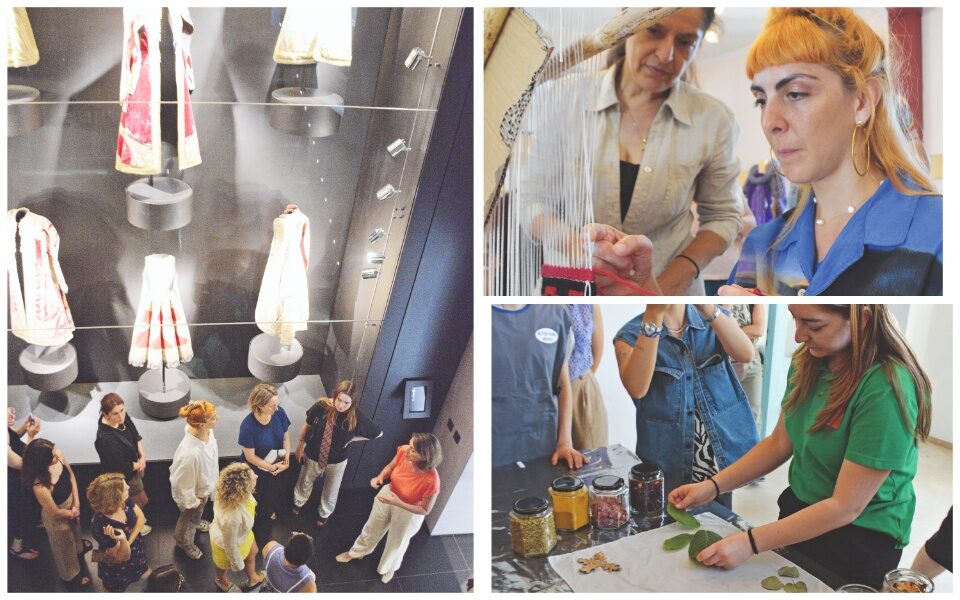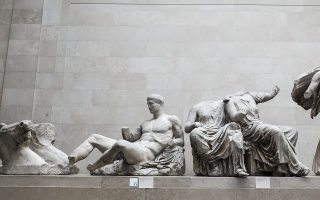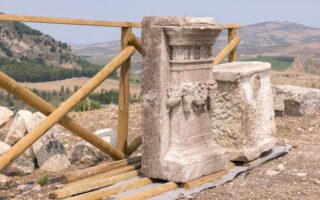Exploring the roots of fashion across Greece
International summer school acquaints participants with traditional sartorial crafts, explores new applications

They worked witth Pomak embroiderers to create intricate traditional patterns and alongside the nuns of the Orthodox Monastery of Saints Konstantinos and Eleni in the Peloponnese, mastering the art of weaving on the loom. They familiarized themselves with the delicate techniques of silk moth farming, visited cotton ginning mills, explored the archaeological site of Vergina near Thessaloniki, marveled at the beauty of traditional Greek costumes in Kalamata, and delved into the world of digital fashion. The program of the inaugural summer school of Fashion Revolution Greece was exceptionally comprehensive and diverse, catering to the preferences and needs of all 18 participants hailing from Latin America, the United States, Europe, Lebanon and India.
“We extended an invitation to all those passionate about transforming the fashion industry – students and educators, workers and entrepreneurs in the field, young individuals with environmental concerns,” explains Fiori Zafeiropoulou, who came up with the idea of the project. Zafeiropoulou is an expert in sustainable and ethical supply chains and serves as the country coordinator of Fashion Revolution Greece. Her proposition resonated with like-minded individuals who embrace the values of a green and ethical economy. Seventeen women and one man came together for a 20-day event in Greece. “Our objective was not only to share the best practices implemented in our country but also to facilitate the exchange of expertise,” says Zafeiropoulou. “Until a few decades ago, Greece thrived in the garment industry, leveraging our abundant raw materials such as cotton and silk, which enabled us to establish a complete supply chain,” she says. The group attended lectures by academics and renowned professionals, engaged in workshops and explored Greece during their free time.
‘Until a few decades ago, Greece thrived in the garment industry, leveraging our abundant raw materials such as cotton and silk’
“I had never witnessed the step-by-step production of silk, as I did in Soufli,” shares 36-year-old Lucia Dao, a Venezuelan who resides in Mexico and owns a second-hand clothing store. “In our region, silk production is limited to a small community in the Andes, which I have never had the opportunity to visit,” she says. Thrace captured the heart of this young Latin American, not just because of the silk moth. “We toured extensively, visiting the towns of Xanthi and Komotini, and the Pomak villages. The breathtaking landscapes and the warm hospitality of the people made me feel at home,” she says. Dao joined the program with the intention of honing her skills in reusing clothing and fabrics at her store in Tulum, Mexico. However, through interactions with fellow participants and industry professionals, she gained valuable insights. “I have a strong creative side, but I lack expertise on the entrepreneurial side,” she admits. “Traditions are fading away, not only in Greece but worldwide. But we have the power to breathe new life into them through the fashion industry.” A visit to the Victoria Karelias Collection of Traditional Greek Costumes in Kalamata left a profound impression on Lucia. “The vast range of the collection, the innovative costume exhibition, and the seamless integration of technology for an enhanced visitor experience left me inspired and brimming with ideas,” says the 36-year-old, who found parallels between the traditional Greek costumes and those of the indigenous populations in Latin America.
“I have a strong aspiration to work in sustainable fashion, which is why I travel around the world to discover and learn about the best practices,” says 23-year-old Hetansi Parekh, who studied fashion in the United Kingdom. In her native India, she observes various conflicting aspects of the modern clothing industry, such as the exploitation of underpaid local labor and the dominance of big corporations in the field. “These problems stem from the absence of a legislative framework; it is the government’s responsibility to protect the workers.” Parekh herself aligns with the values of Fashion Revolution, advocating for sustainable fashion and fair trade. These values are what she aims to promote worldwide through her social media marketing company. “After Greece, my journey will continue to Turkey, followed by Stockholm and Copenhagen, where sustainable fashion has taken root, in order to further explore and discover,” she adds.
“Our visitors encountered a distinct side of Greece, where they experienced its creative essence and met visionary individuals who, despite challenges, preserve and enhance traditional techniques,” says Elis Kiss, fashion features director at Vogue Greece, who met the team in Mani in the Peloponnese. “During our discussions, we explored how the fashion industry, particularly the luxury segment, leverages the cultural identity of a place,” says Kiss. “Big fashion brands have demonstrated interest in and delved into Greece’s cultural heritage. For instance, Dior recently unveiled a collection inspired by antiquity.”
Naturally, cultural heritage also serves as inspiration for independent designers, as exemplified in the works of Mary Katrantzou and the late Sophia Kokosalaki. In the past, the practice of cultural appropriation faced criticism, as cultural borrowing often occurred without acknowledgment. “Now, however, fashion houses openly discuss and advertise the sources of their inspiration, and they frequently collaborate with local units in the production process,” says Kiss.
Before their departure, the majority of the participants got tattoos of a circle of women, symbolizing traditional Greek dances and the concept of cyclical fashion. “It was an exceptionally enriching experience over the course of 20 days,” says Zafeiropoulou. “We all emerged with newfound wisdom: For instance, in conversations with the nuns at the monastery, I discovered that Morias acquired its name due to the abundance of mulberry trees that once graced the area, when silk production flourished in ancient times.”





